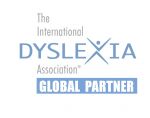Dysgraphia
Specific Learning Disorder with Impairment in Written Expression - Dysgraphia
Producing written text is a complex process requiring the carefully coordinated interaction between motor processes (such as handwriting) and many language and literacy processes.
Difficulties in written expression can be linked to a range of factors. These can include:
· Motor coordination issues that make the process of handwriting more challenging – Dysgraphia addressed by an Occupational Therapist
· Language processing issues that make it harder for students to organise their thoughts whilst writing - Specific Learning Disorder with an impairment in written expression
· A combination of motor coordination and language processing issues.
When students experience ongoing struggles with spelling and expressing themselves through writing, despite additional support and intervention, it is possible that these students have a specific learning disorder with impairment in written expression. This has been commonly referred to as Dysgraphia however the terminology used within the DSM-5 is referred to by our psychologists in their reports i.e. Specific Learning Disorder with Impairment in Written Expression.
What you might see in the classroom.
| Pre/Lower Primary School | Mid/Upper Primary School | Secondary School |
|
|
|
Information reproduced from AUSPELD Understanding Learning Difficulties: A practical guide (Revised edition).






